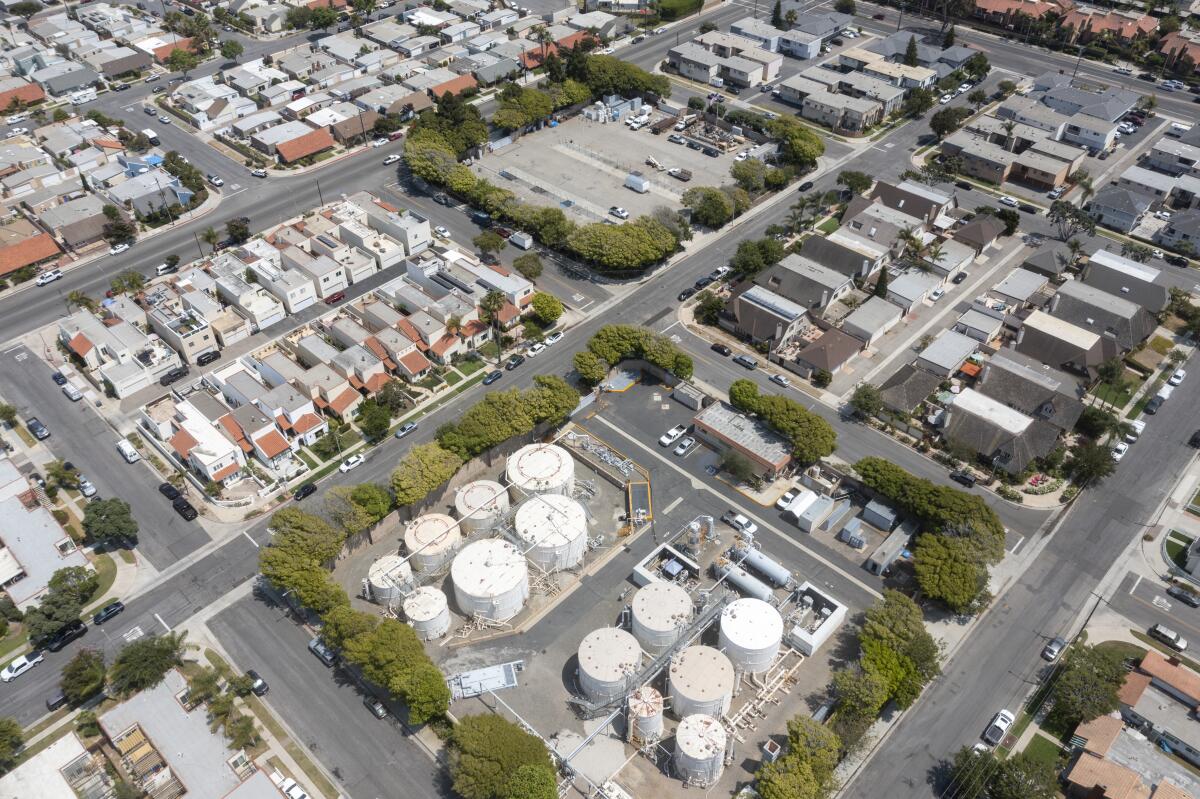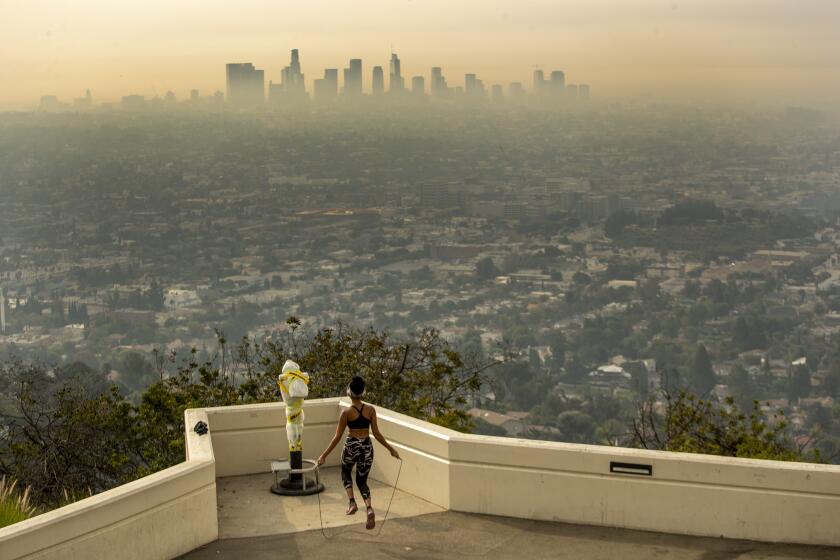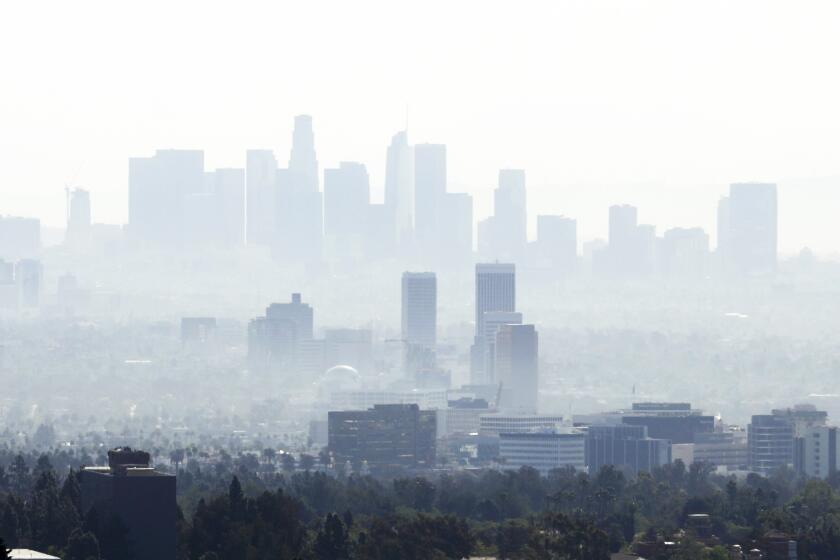Regulators require stricter controls to curb leaks from oil tanks

Southern California air regulators voted unanimously Friday to adopt more stringent rules to monitor and curb smog-forming pollution from fuel storage tanks at oil refineries and other facilities.
The South Coast Air Quality Management District voted 9 to 0 to amend current rules and require more stringent vapor controls for storage tanks that hold crude oil, gasoline, diesel, jet fuel and other petroleum products. The region is home to a number of refineries, oil drilling sites and so-called tank farms where these round storage receptacles hold imported or extracted oil, in addition to the assortment of finished products.
Long-term exposure to fine particulate pollution may increase the risk of developing dementia, new research says.
When vapors leak from these tanks, they release a a medley of volatile organic compounds (VOCs) — easily evaporated chemicals, such as cancer-causing benzene. These chemicals also combine with vehicle exhaust or smokestack emissions to form lung-searing smog. A 2017 study commissioned by the air district found that these emissions were drastically underestimated, largely due to leaking valves and storage tanks.
When temperatures rise, pressure builds up inside some storage tanks. Tanks with fixed roofs are outfitted with vents and vapor capture systems for these instances. This new rule would raise the amount of chemicals to be captured from 95% to 98%.
Perhaps of greater consequence, the rule pertains to another type of tank that has a floating roof, which rises and falls like a piston as it’s filled with or emptied of petroleum products. This fluctuation leaves the tank’s walls coated with fuel residue, releasing chemical vapors.
The amended rule will require floating-roof tanks to be fitted with a dome to capture these fumes. And all crude oil tanks will be required to be domed.
The air district is also mandating weekly monitoring using thermal or infrared cameras for leak detection.
New to L.A. and looking for a place to live, I had to quickly educate myself on the region’s largest polluters, its many microclimates and its topography.
The new requirements will apply to more than 1,000 tanks at around 30 facilities across Southern California, and will be phased in gradually over the next two decades. They are expected to reduce daily volatile organic compound emissions by one ton a day.
“This tanks regulation is really a major step forward to cut not only smog-forming VOCs but cancer-causing benzene, and it’s a big rule that sets a model for other parts of the state and the country,” said Julia May, senior scientist with Communities for a Better Environment.









